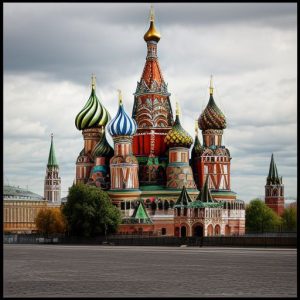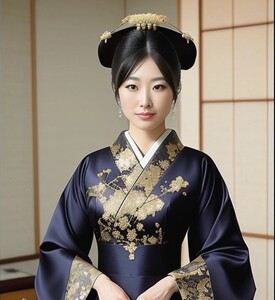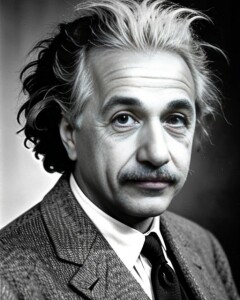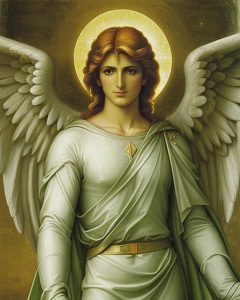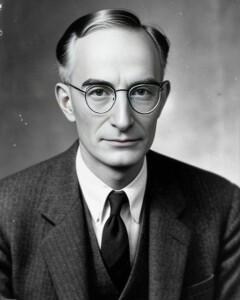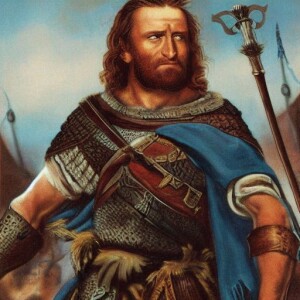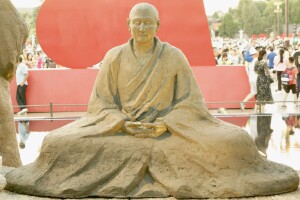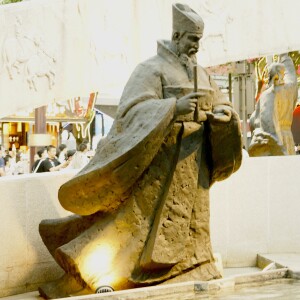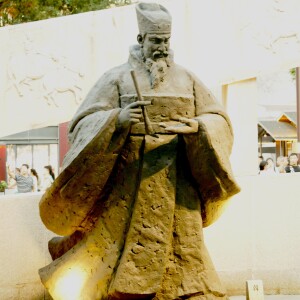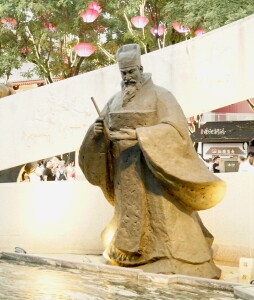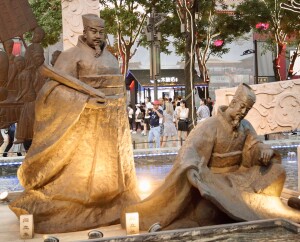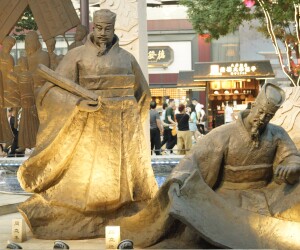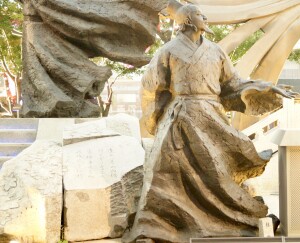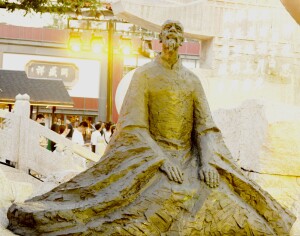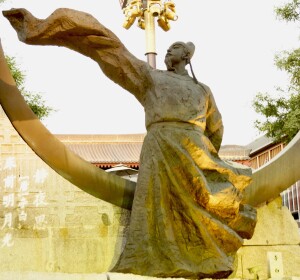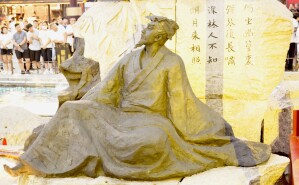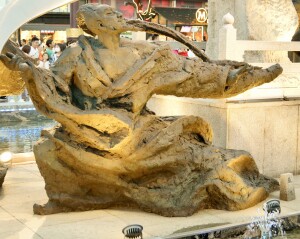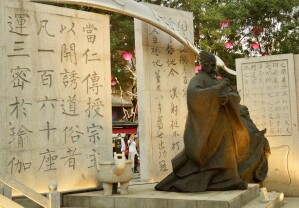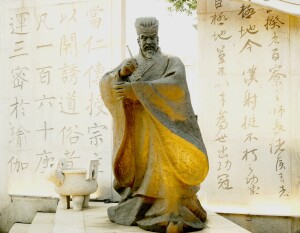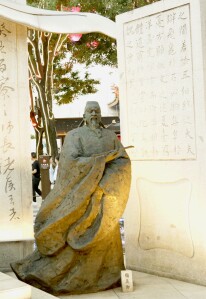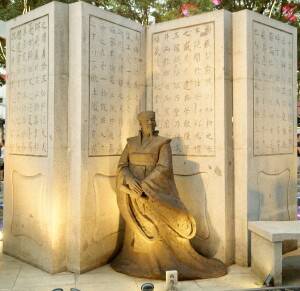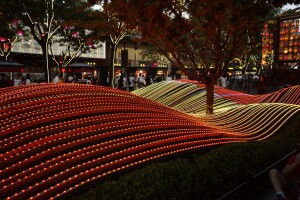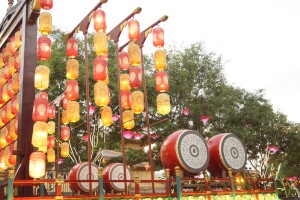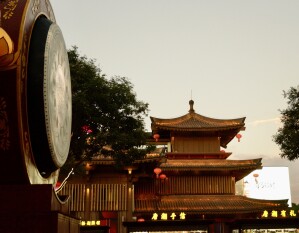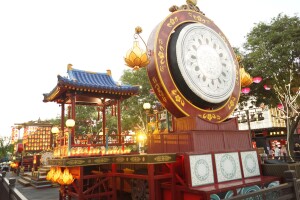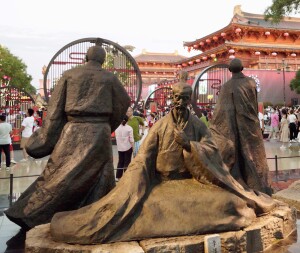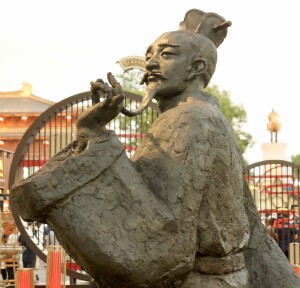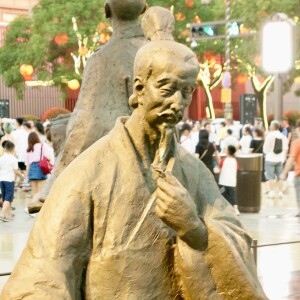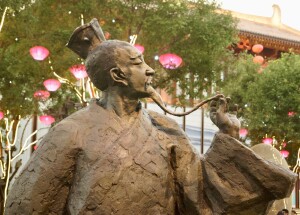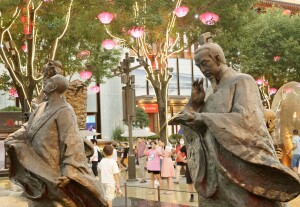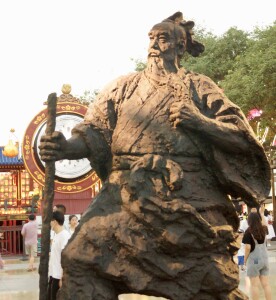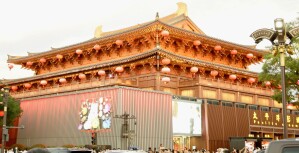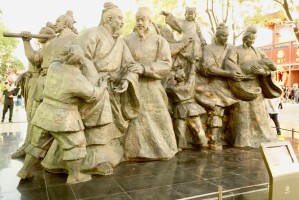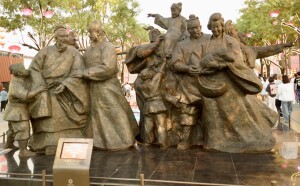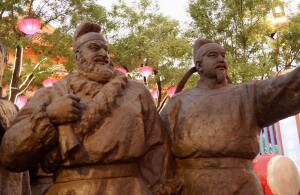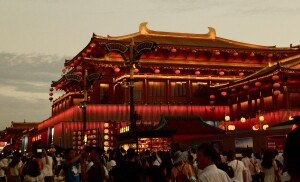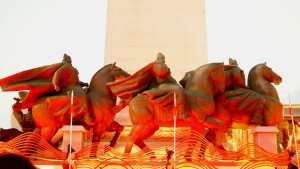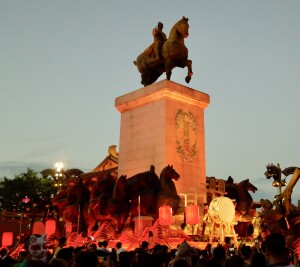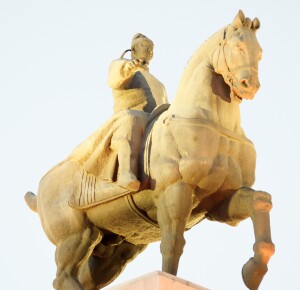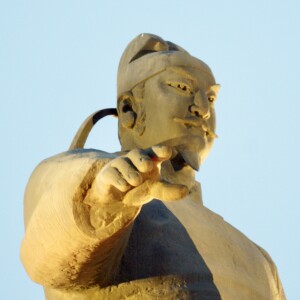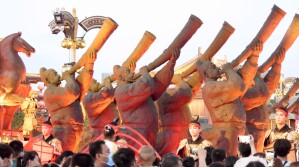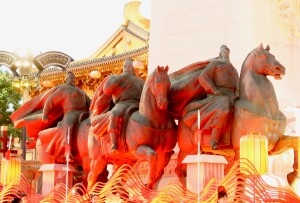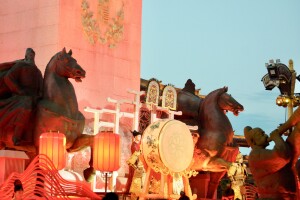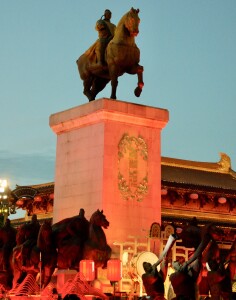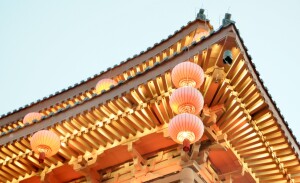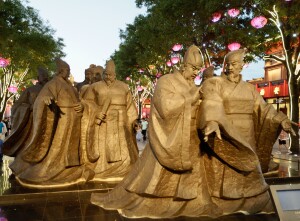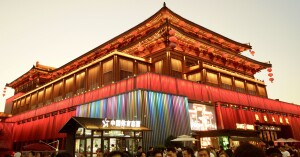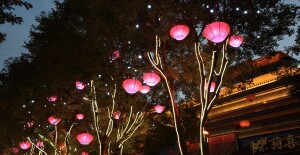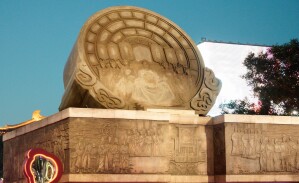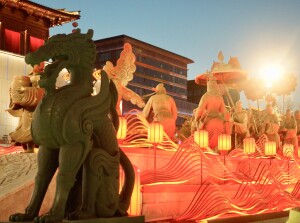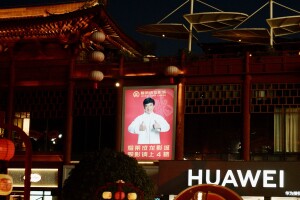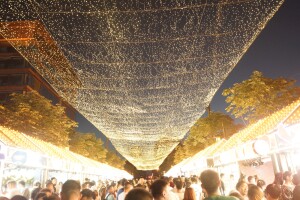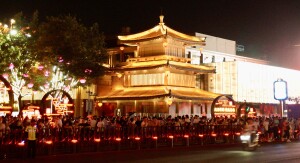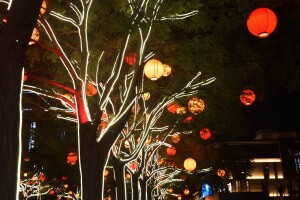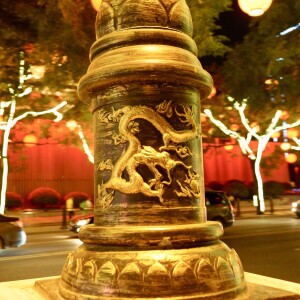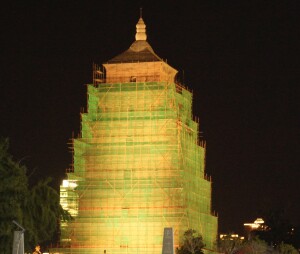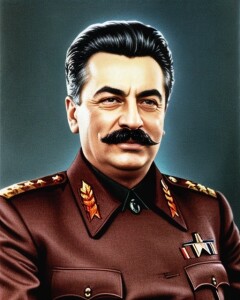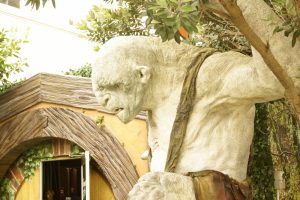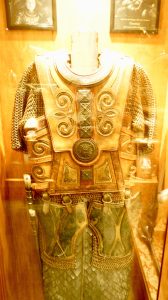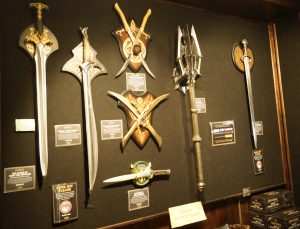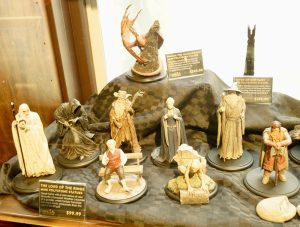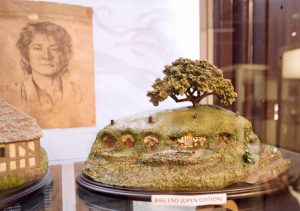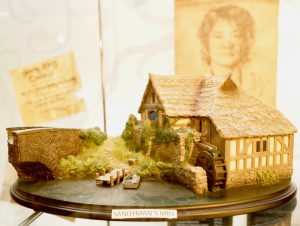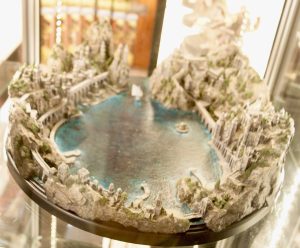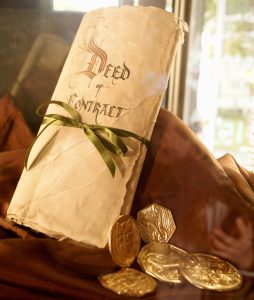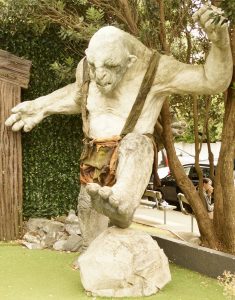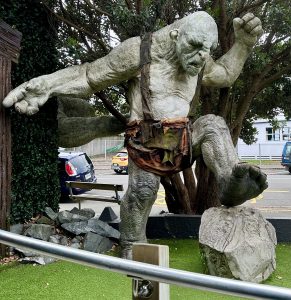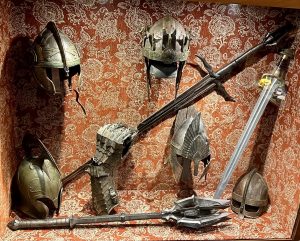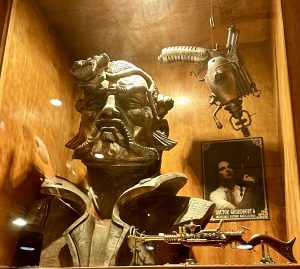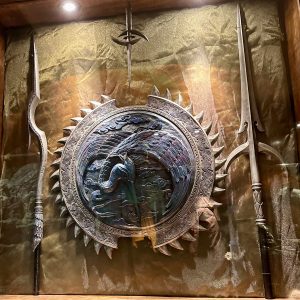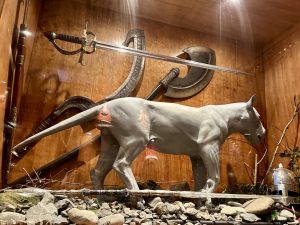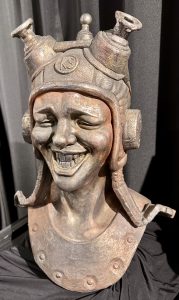When it comes to getting a great deal when dealing with a car dealership, there are several strategies that can help you navigate the process and ensure you get the best price possible. First and foremost, it’s important to do your research. Before stepping foot into a dealership, take the time to research the make and model of the car you’re interested in, as well as its market value and any potential discounts or incentives available. This knowledge will give you a solid understanding of what a fair price would be, and will prevent you from being taken advantage of. Additionally, it’s crucial to be prepared to negotiate. Remember that the sticker price is often just a starting point, and there is usually room for negotiation. Be confident and assertive in expressing what you’re willing to pay and be prepared to walk away if the dealer isn’t willing to meet your terms. Another tip is to consider timing. Car dealerships often have monthly, quarterly, or yearly sales targets to meet, so it can be advantageous to buy a car towards the end of these periods when dealers may be more motivated to offer better deals. Finally, don’t forget to explore financing options. While the dealership may offer financing, it’s a good idea to secure pre-approved financing from your bank or credit union beforehand. This will give you the leverage to negotiate a better deal on the overall price of the car, as you won’t be dependent on the dealership’s financing terms. By following these strategies, you’ll be well-equipped to get a great deal when dealing with a car dealership.
The Kremlin: Where Politics, History, and Culture Converge
Situated in Moscow, the Kremlin stands as a testament to the political and historical significance of Russia. Derived from the Russian word “Kreml,” which means “fortress,” this iconic symbol serves as the official residence of the President of the Russian Federation. Its origins can be traced back to the 12th century when it was constructed as a wooden fortress, acting as a safeguard against external threats. Over the years, the Kremlin has undergone various additions, renovations, and expansions, resulting in the magnificent complex that we behold today.
Far beyond being just a political center, the Kremlin holds immense cultural and historical importance. Within its fortified walls, one encounters the awe-inspiring Cathedral Square, adorned with remarkable cathedrals such as the Assumption Cathedral, the Archangel’s Cathedral, and the Annunciation Cathedral. These architectural masterpieces not only showcase stunning designs but also house invaluable religious artifacts. Additionally, the Kremlin houses the renowned Armoury Chamber, a museum that proudly exhibits a vast collection of imperial treasures, including crowns, thrones, Fabergé eggs, and royal carriages. The sight of the Kremlin’s red-brick walls, towers, the Tsar Bell, and the Tsar Cannon further enriches its already stunning visuals. Surrounding the complex are picturesque gardens and captivating views of the Moskva River, adding to its overall allure.
Through the course of history, the Kremlin has borne witness to significant events like coronations, imperial weddings, and political gatherings. Serving as a symbol of power, authority, and resilience, it embodies the very essence of the Russian state. Today, the Kremlin remains a central hub of political activity, while continuing to embody Russia’s rich cultural heritage. Its historical and architectural significance, coupled with its role as a political stronghold, make the Kremlin not only important for Russia but for the world as a whole.
Located at the heart of Moscow, Russia, the Kremlin holds immense political significance as the country’s nerve center. It is a sprawling complex that encompasses several palaces, cathedrals, and government buildings. Within these walls, a wide range of significant events and activities take place.
First and foremost, the Kremlin serves as the official residence of the President of Russia. It is the place where crucial decisions are made, national policies are formulated, and diplomatic relations are forged. The president’s office and living space are all contained within this historic complex.
Moreover, the Kremlin houses various arms of the Russian government, including the State Duma and the Federation Council. These chambers serve as legislative bodies where debates, passes, and implementations of laws occur. Additionally, the Kremlin also accommodates several ministries and departments responsible for overseeing aspects such as defense, foreign affairs, finance, and culture. High-level meetings, negotiations, and summits shaping the nation’s domestic and international agendas occur in this historic venue.
Beyond its political significance, the Kremlin is a site of historical and cultural heritage. It boasts opulent palaces and cathedrals, like the Grand Kremlin Palace and the Cathedral of the Annunciation, which draw tourists from all corners of the globe. These architectural marvels provide a window into Russia’s rich past and architectural brilliance, captivating visitors with their grandeur.
In conclusion, the Kremlin is a multifaceted institution where political, administrative, and cultural activities intertwine. Its presence plays a pivotal role in shaping Russia’s destiny and leaving an indelible mark on its history.
Nero Claudius: Decoding the Controversial Reign of Rome’s Enigmatic Emperor

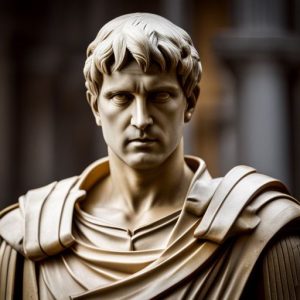
Meet Nero, the infamous Roman emperor who ruled from 54 to 68 AD. Nero, or Nero Claudius Caesar Augustus Germanicus, was the last emperor of the Julio-Claudian dynasty, and his reign was nothing short of controversial. The tyrant, Nero, was known for his cruelty and debauchery, which earned him a fearsome reputation. He even murdered his own mother and several other family members, and while Rome burned in the Great Fire of 64 AD, he reportedly played his lyre.
Despite his brutal reputation, Nero was also a patron of the arts and a lover of Greek culture. He was a man of many talents and was known for his public and private performances, including singing and acting. Nero was also a builder, responsible for the construction of several impressive public works, including the Domus Aurea (Golden House) and the Colossus of Nero.
However, Nero’s reign was not smooth sailing. It was marked by economic troubles, political instability, and military failures. Nero faced several rebellions during his rule, including the Pisonian conspiracy, which was led by a group of senators who sought to overthrow him. Ultimately, Nero was forced to flee Rome, and the Senate declared him a public enemy.
Despite his accomplishments, Nero’s legacy remains controversial. He was a man of many talents who left a mark on Roman history, but he was also a tyrant who was responsible for the deaths of many. In 68 AD, Nero committed suicide, bringing an end to his tumultuous reign. Today, Nero is remembered both for his artistic contributions and his tyranny, making him a fascinating and complex figure in history.
Communism vs. Democracy: A Century-Long Showdown of Ideological Olympics (Spoiler: Both Sides Get Gold Medals for Effort)
In the past 100 years, both communism and democracy have made significant progress, but the extent of their advancements can be debated. Communism, as an ideology, emerged in the early 20th century and sought to establish a society in which resources are distributed equally among all members, and the means of production are owned and controlled by the community as a whole. While communism gained traction in several countries, such as the Soviet Union and China, it faced various challenges and criticisms. The collapse of the Soviet Union in 1991 marked a significant setback for communism, and subsequent reforms in China also moved away from the original Marxist principles. On the other hand, democracy, which emphasizes individual freedoms, political participation, and the rule of law, has also witnessed progress. Throughout the 20th century, many countries transitioned from autocratic or authoritarian regimes to democratic systems. The spread of democracy was further accelerated after the end of World War II, with the establishment of international organizations like the United Nations that promoted democratic values. However, it is important to note that the progress of democracy has not been without setbacks. Some countries have experienced democratic backsliding, where democratic institutions weaken, and autocratic tendencies emerge. Additionally, the rise of populism and the erosion of democratic norms in recent years have raised concerns about the future of democracy. Ultimately, determining which ideology has progressed further in the past century is subjective and dependent on various factors such as geographical location, historical context, and individual perspectives.
Uriel’s Illumination: Navigating Life’s Depths with Divine Wisdom
Archangel Uriel, who is commonly referred to as the angel of wisdom, holds a position of great significance in various religious and mythical traditions. Within the celestial realms, Uriel is believed to possess an extraordinary ability to enlighten mortal beings, offering them transcendental knowledge and guidance. This celestial figure is often depicted as a compassionate and wise being, entrusted with the sacred responsibility of bestowing wisdom upon humanity. Uriel serves as a divine source of illumination, aiding individuals in navigating the intricate complexities of life by providing insights that surpass ordinary understanding. The teachings and influence of Uriel extend beyond mere intellectual knowledge, encompassing spiritual and moral enlightenment. Through various spiritual texts and folklore, Uriel is portrayed as a protector and mentor, offering assistance to those who seek truth and a deeper understanding of the divine. The presence of Uriel is believed to bring clarity and profound insight, empowering individuals to make well-informed choices and navigate the challenges they encounter during their earthly journey. Whether regarded as a divine entity or a symbolic embodiment of wisdom, Uriel’s role as the angel of wisdom has long intrigued the imaginations of people throughout history, inspiring them to pursue higher knowledge and attain a deeper comprehension of the enigmatic mysteries of existence.
Radiant Elegance: Decoding the Enchanting Beauty Secrets of Japanese Women
Japanese women have long captivated admirers with their exquisite beauty, a result of numerous intriguing factors. One notable aspect is their culture’s heavy emphasis on skincare and beauty rituals, which greatly contribute to their allure. Japanese women diligently follow a meticulous multi-step skincare regimen that involves utilizing only the finest products to maintain a vibrant and healthy complexion. Protecting their skin from the sun’s harmful effects is a top priority for them, leading them to go to great lengths to shield themselves.
In addition to their skincare practices, Japanese women owe their radiant beauty to a well-balanced diet brimming with succulent fruits, verdant vegetables, and delightful seafood. These nourishing elements not only bestow upon them a luminous complexion but also promote their overall well-being. Another aspect that adds to their enchantment is their remarkable fashion sense. Japanese women effortlessly amalgamate traditional elements with contemporary trends, resulting in extraordinary and refined ensembles that exude elegance and individuality.
Furthermore, Japanese women exhibit an unwavering commitment to self-discipline, taking immense pride in their appearance. They engage in invigorating activities such as yoga, martial arts, or dance, sculpting and maintaining a toned physique that radiates health and vitality. However, it is their innate grace and poise that truly distinguish them. From a young age, Japanese women are instilled with values of etiquette, respect, and humility, which emanate through their graceful demeanor.
In essence, the ethereal beauty possessed by Japanese women resembles a harmonious symphony orchestrated by an exquisite skincare routine, a wholesome lifestyle, an impeccable sense of fashion, unwavering self-discipline, and the profound influences of their rich cultural heritage.
Groundhog Day: Shadows, Shenanigans, and Six More Weeks of Side-Splitting Winter
The annual celebration of Groundhog Day, which takes place each year on the 2nd of February, holds significant importance mainly in North America. Originating from ancient weather lore brought by German settlers to Pennsylvania between the 18th and 19th centuries, this unique and unconventional tradition centers around the emergence of a groundhog from its burrow after a prolonged hibernation. Symbolically, it predicts the arrival of the eagerly anticipated spring season. According to this customary belief, if the groundhog spots its own shadow on this auspicious day, it promptly retreats back into its burrow, signifying an additional six weeks of winter. Conversely, if the skies are cloudy and the groundhog fails to perceive its shadow, it serves as a promising indication of an early onset of spring.
This idiosyncratic celebration has deeply ingrained itself within the cultural landscape of both the United States and Canada, captivating worldwide attention and arousing curiosity. Although the groundhog’s prediction accuracy is often a subject of debate, Groundhog Day festivities have transformed into a source of entertainment and a means to foster community engagement. From Punxsutawney Phil in Pennsylvania to Wiarton Willie in Canada, numerous groundhogs have been officially appointed as forecasters, attracting large crowds eager to witness their prognostications. Vibrant parades, lively music, and a plethora of other festivities are meticulously organized to commemorate this occasion, creating an atmosphere of excitement and eager anticipation.
Groundhog Day acts as a delightfully lighthearted reminder that despite the persistent winter doldrums, the revitalizing spring season is inevitably on its way. It offers a pleasant respite from the monotony of winter and unites people in celebrating the changing seasons. Regardless of individual beliefs in the groundhog’s forecasting abilities, the observance of Groundhog Day has earned a cherished place as a time-honored tradition that brings joy and laughter to communities throughout North America.
Unraveling the Dance of Celestial Spin: The Dzhanibekov Effect and the Tennis Racket Theorem
The Dzhanibekov effect, also known as the Tennis Racket Theorem, is a fascinating phenomenon in physics that occurs when a rotating object undergoes a peculiar motion. This effect was named after Russian cosmonaut Vladimir Dzhanibekov, who first observed it during his space mission in 1985. The Dzhanibekov effect occurs when an object in space, such as a rotating satellite or spacecraft, experiences a change in its rotational axis due to an asymmetric distribution of mass. It is often referred to as the Tennis Racket Theorem because the motion resembles that of a spinning tennis racket when it is thrown in the air. This phenomenon has captured the interest of scientists and physicists worldwide, as it defies the intuitive expectations of rotational motion. The Dzhanibekov effect highlights the complex nature of rotational dynamics and challenges our understanding of how objects behave in space. It serves as a reminder that even seemingly simple systems can exhibit intricate and unexpected behaviors. The study of this effect has important implications for space missions and engineering, where precise control of rotational motion is crucial. Understanding and predicting the Dzhanibekov effect can help scientists and engineers design more stable and efficient spacecraft. Overall, the Dzhanibekov effect is a captivating example of the intricate interplay between mass distribution and rotational dynamics, showcasing the beauty and complexity of the physical world.
Einstein’s Legacy: Unraveling the Brilliance of a Timeless Mind
Albert Einstein, an extraordinary physicist, was born on March 14, 1879, in Ulm, Germany. He has left an everlasting imprint on the field of science and is widely regarded as one of the most brilliant minds in history. Through his groundbreaking discoveries, he revolutionized our understanding of the universe, laying the foundation for modern physics. Among his notable achievements, Einstein’s renowned equation, E=mc², introduced the concept of mass-energy equivalence, serving as the cornerstone of the theory of relativity. In 1915, he fearlessly challenged the prevailing notions of space, time, and gravity by publishing his theory of general relativity. This audacious move led to remarkable advancements in cosmology and astrophysics.
Throughout his illustrious career, Einstein made significant contributions to science, putting forth revolutionary theories that continue to shape our comprehension of the natural world. His extensive research on the photoelectric effect, for which he received the Nobel Prize in Physics in 1921, paved the way for the development of quantum theory. In addition to his scientific brilliance, Einstein demonstrated an unwavering commitment to noble causes. He fearlessly voiced his support for civil rights, pacifism, and global disarmament. By believing in the power of human intellect and creativity, and advocating for social justice, he remains an enduring symbol of intellectual curiosity and humanitarianism.
Undoubtedly, Albert Einstein’s multifaceted contributions to science and his profound impact on society have solidified his position as one of the most influential figures of the 20th century.
Tiberius Claudius Caesar Augustus Germanicus: The Complex Legacy of Rome’s Enigmatic Emperor
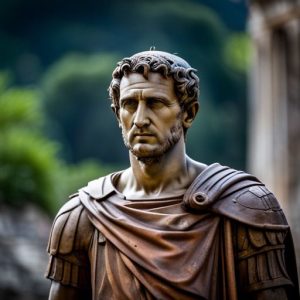
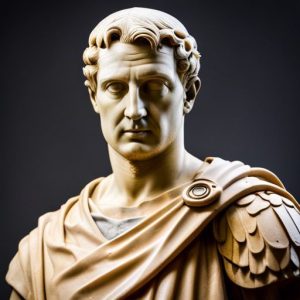
Meet Tiberius Claudius Caesar Augustus Germanicus, also known as Claudius, a Roman emperor who ruled from 41 to 54 AD. Born in 10 BC into the powerful Julio-Claudian dynasty, he was the son of Nero Claudius Drusus, a prominent Roman general, and was destined for great things. However, his family considered him weak and mentally challenged due to his various health problems, which led to him being excluded from public life and not considered a potential emperor.
Despite his family’s opinion, after the assassination of his nephew Caligula, Claudius was declared emperor by the Praetorian Guard. And boy, did he prove them wrong! Despite his reputation as a weak and foolish man, Claudius showed himself to be a capable ruler, known for his administrative abilities and several important reforms, including improving the legal system and expanding the Roman Empire.
Under his rule, Britain was conquered, and significant contributions were made to the construction of important public works like aqueducts and roads. But that’s not all, Claudius was also a scholar and writer. He wrote several works on history and politics, including a 20-volume history of Rome, and was a patron of the arts, encouraging the development of literature and drama in Rome.
However, like any other ruler, Claudius had his flaws. He was criticized for his personal life, including his marriages to several women, some of whom were accused of plotting against him. He was also known for his fondness for gladiatorial games and was accused of being cruel to his opponents.
Despite these criticisms, Claudius is remembered as a successful and important emperor. He was the first Roman emperor to be born outside of Italy, and his reign marked a period of stability and prosperity for the Roman Empire. He passed away in 54 AD, possibly poisoned by his wife Agrippina, who wanted her son Nero to become emperor. Even after all these years, Claudius’s legacy continues to be studied and debated by historians and scholars, and he remains an essential figure in Roman history.
Raphael’s Radiance: A Healing Light in Spiritual Traditions
Archangel Raphael, a revered figure in various religious and spiritual traditions, holds a prominent position as the angel of healing, imbued with divine purpose to bring restoration and healing to those in need. His very name, translating to “God heals” or “Healer of God,” underscores his significance. Compassionate and unwavering in dedication, Raphael is often portrayed as a radiant and powerful figure, emitting a healing energy that offers solace and relief to those who seek his assistance. Regardless of whether individuals require physical, emotional, or spiritual healing, Archangel Raphael is believed to provide comfort, guidance, and divine intervention to those genuinely in need.
Throughout history, countless individuals have sought Raphael’s healing powers to alleviate physical ailments and emotional wounds. Numerous testimonials attest to the transformative impact of his intervention. Connecting with the energy of Archangel Raphael often results in a profound sense of peace, harmony, and rejuvenation as his healing presence permeates their lives. Whether through prayer, meditation, or simply invoking his name, people have reported miraculous healing and profound spiritual growth upon opening themselves to the loving and nurturing energy bestowed by this celestial being.
It is essential to acknowledge that Archangel Raphael’s role as the healing angel extends beyond the physical realm; it encompasses emotional and spiritual well-being as well. He is believed to assist individuals in healing emotional wounds, overcoming past traumas, and discovering inner peace. Furthermore, Raphael serves as a guide for those embarking on their spiritual journey, offering invaluable support and encouragement. As a divine healer, Archangel Raphael stands as a beacon of hope and inspiration for individuals facing challenging circumstances. His presence serves as a potent reminder that healing transcends physical limitations, encompassing all aspects of our being. By establishing a connection with Archangel Raphael and embracing his healing energy, individuals can find comfort, guidance, and the strength to embark on their own path of healing and transformation.
J. Robert Oppenheimer: Architect of the Atom, Weaver of Scientific Ethics
J. Robert Oppenheimer, a prominent American physicist widely recognized as the “father of the atomic bomb,” played a pivotal role in the development of nuclear weapons during the turbulent era of World War II. Born on April 22, 1904, in the vibrant city of New York, Oppenheimer exhibited remarkable intellectual prowess from a young age. He embarked on his academic journey at Harvard University, immersing himself in the study of physics. Subsequently, he pursued his Ph.D. at the esteemed University of Göttingen in Germany. Oppenheimer’s scientific career soared when he joined the distinguished faculty at the University of California, Berkeley, making significant contributions to the field of theoretical physics, with a particular focus on the enigmatic domain of quantum mechanics. However, it was his unwavering commitment to the Manhattan Project that irrevocably altered both his own life and the course of history.
In 1942, Oppenheimer was appointed as the esteemed scientific director of the covert and classified Manhattan Project, a highly secretive government initiative aimed at unraveling the enigmas of atomic energy and harnessing its enormous potential to create an atomic bomb. Under his exemplary leadership, a group of brilliant scientists and engineers worked tirelessly, united by the common objective of unraveling the complexities of nuclear fission. Oppenheimer’s exceptional organizational skills and ability to bring together individuals from diverse disciplines proved pivotal in the project’s resounding success. Armed with his unparalleled intellect and profound insights into the realm of physics, he expertly navigated numerous scientific obstacles with determination, each challenge only enhancing his unassailable reputation.
Amidst the weighty pressures and profound moral dilemmas associated with the development of such a devastating weapon, Oppenheimer’s unwavering dedication to his craft remained intact. The momentous and historic Trinity test in July 1945 stands as an indelible turning point in human history. The successful detonation of the first atomic bomb symbolized the unleashing of unparalleled destructive power, ultimately leading to the bombings of Hiroshima and Nagasaki in Japan, hastening the end of the cataclysmic World War II.
Nevertheless, Oppenheimer’s involvement in the Manhattan Project cast a shadow of ambiguity over his previously illustrious legacy. After the war, he emerged as a staunch advocate for international control of atomic weapons, expressing fervent concerns about the perilous arms race that loomed. Unfortunately, Oppenheimer’s progressive views and perceived associations with politically left-leaning groups during the McCarthy era inevitably resulted in accusations of disloyalty and alleged sympathies with communist ideologies. In 1954, he underwent a highly charged security hearing and, despite his invaluable contributions to national security, unjustly had his security clearance revoked.
Undeterred by these personal and professional setbacks, Oppenheimer tenaciously continued to make exceptional contributions to the scientific community. He resolutely returned to his true passion, teaching and engaging in research at the prestigious Institute for Advanced Study in Princeton, where he nurtured and mentored a forthcoming generation of physicists, leaving an indelible imprint on the realm of knowledge. Beyond his groundbreaking scientific achievements, the profound impact of Oppenheimer’s intellectual brilliance, inspiring leadership, and unwavering commitment to the ethical dimensions of scientific inquiry resonate through the annals of time.
The life and work of J. Robert Oppenheimer epitomize the intricately woven tapestry of science, politics, and morality. While his role in the development of the atomic bomb remains a contentious subject, his broader contributions to the advancement of physics cannot be easily dismissed or overlooked. Oppenheimer’s legacy serves as an enduring reminder of the immense power and weighty responsibility that inevitably accompany scientific breakthroughs, compelling us to continuously consider the ethical implications that underlie every action we undertake.
Dick Move Band Lives Up to Their Name
The concert lineup for the night featured three bands, with Dick Move kicking off the event, followed by The Breeders, and finally, the Foo Fighters headlining the show. Dick Move, although being the opening act, unfortunately failed to impress the crowd with their performance. Their sound was characterized by a lack of clarity, making it difficult to understand the lyrics or any message they were trying to convey. Moreover, their songs seemed to blend together, lacking diversity and originality. As they concluded their set and made their way off the stage, they decided to voice their political opinions by shouting “Free Palestine.” However, this unexpected political statement was met with disapproval from the audience. Understandably, concertgoers attend live shows to enjoy the music and escape from the political climate, rather than being confronted with divisive topics. Consequently, their politically charged outburst was not well-received, with many attendees feeling that it was inappropriate and unwelcome.
Unyielding Valor: The Saga of William Wallace, Scotland’s Eternal Hero
In the annals of Scottish history, one name stands out like a beacon of hope and defiance: William Wallace. Born in the tumultuous era of the late 13th century, Wallace would rise to become a legendary figure, forever etched in the memories of his countrymen.
With a spirit untamed by English oppression, Wallace emerged as a fierce leader, embodying the indomitable Scottish resistance. His presence alone struck fear into the hearts of his enemies. Renowned for his military genius and tactical brilliance, he orchestrated a series of triumphant campaigns against the English forces.
But it was at the Battle of Stirling Bridge where Wallace’s legend reached its zenith. With the odds stacked against them, the Scottish army, led by this fearless warrior, defied all expectations and achieved an astonishing victory. The reverberations of this momentous event echoed throughout the land, igniting a fire of nationalistic fervor that burned brighter than ever before.
Alas, the tides of fortune can be fickle, and Wallace’s glory was short-lived. The Battle of Falkirk dealt a crushing blow to his aspirations, leading to his capture and subsequent execution in 1305. Yet, even in death, his spirit refused to be extinguished.
The tale of William Wallace, the valiant knight who dared to challenge the might of a kingdom, captured the hearts and minds of generations. His legacy became an indelible symbol of Scottish resilience and the fight for independence. From the epic verses of Blind Harry’s “The Wallace” to the silver screen portrayal in the iconic film “Braveheart,” his story has resonated across time.
William Wallace, the embodiment of unwavering commitment and heroic deeds, continues to inspire and captivate. His name lives on, forever etched in the annals of Scottish history, as an enduring symbol of bravery, freedom, and the undying spirit of a nation.
Exploring the Wonders of Datang Everbright City in Xi’an
Datang Everbright City in Xi’an presents a captivating destination that effectively showcases the rich history and contemporary developments of China. Tucked away within the ancient city of Xi’an, this vibrant cultural complex offers a delightful fusion of traditional architecture and cutting-edge technology. As soon as you set foot here, you are instantly whisked away to a bygone era, greeted by splendid replicas of Tang Dynasty structures adorned with intricate carvings and vibrant hues. These architectural wonders not only provide visually pleasing sights but also offer a glimpse into the grandeur of the Tang Dynasty, widely regarded as the golden age of Chinese civilization. The meticulous attention to detail in their design and construction is truly commendable, making it an absolute must-visit for history buffs and architectural enthusiasts.
However, Datang Everbright City goes beyond being a mere historical site; it seamlessly integrates modern advancements to create an immersive and interactive experience for visitors. The Tang Paradise, a standout feature of this complex, is an enticing theme park that meticulously recreates the splendor of the Tang Dynasty. Here, one can explore breathtaking gardens, be mesmerized by captivating performances, and even take a serene boat ride across the picturesque lake. The clever use of cutting-edge technologies, such as awe-inspiring holographic projections and immersive virtual reality, adds an unparalleled charm to the overall experience, effectively bringing the history to life in the most captivating manner.
Another remarkable aspect of Datang Everbright City lies in its diverse range of cultural activities. From mesmerizing traditional Chinese dance performances and soul-stirring music concerts to captivating calligraphy demonstrations and elegant tea ceremonies, there is a plethora of engaging experiences catering to individual preferences. Moreover, visitors are provided with opportunities to participate in workshops where they can learn cherished traditional crafts like the delicate art of paper cutting and the exquisite mastery of silk embroidery. These activities allow participants to gain a profound understanding and appreciation for the rich tapestry of Chinese culture and artistic heritage.
Furthermore, Datang Everbright City takes its visitors on an extraordinary gastronomic journey through the flavors of ancient China. Within the complex, one can find a variety of exceptional restaurants and quaint food stalls serving delicious, authentic Tang Dynasty cuisine. Every dish, from the savory dumplings to the delectable sweet rice cakes, is meticulously prepared using traditional recipes and techniques, offering visitors an exquisite and authentic taste of the past.
Beyond its cultural and culinary wonders, Datang Everbright City also provides ample opportunities for relaxation and leisure. The expansive park surrounding the complex offers an idyllic setting for leisurely strolls amidst lush greenery or enjoyable picnics, providing a tranquil escape from the bustling city life. Additionally, numerous souvenir shops and boutiques are scattered throughout the complex, enticing visitors with unique handicrafts and treasured mementos that serve as tangible reminders of their extraordinary visit.
In conclusion, Datang Everbright City in Xi’an stands as an exceptional destination that seamlessly combines history, culture, and technology. Whether one finds themselves engrossed in the annals of the past, captivated by artistic marvels, or simply seeking an extraordinary and immersive experience, this cultural complex offers something truly extraordinary for every individual. Its meticulous attention to detail, interactive attractions enhanced by advanced technologies, and diverse range of engaging activities effortlessly establish it as a must-visit destination epitomizing the very best of ancient and modern China.
Echoes of Desolation: Unveiling the Tragedy of the Holodomor
The Holodomor, or the Ukrainian famine of 1932-1933, holds a stark place in Ukrainian history. This devastating event was orchestrated by the Soviet Union, specifically under Joseph Stalin’s leadership, with the intention of suppressing Ukrainian nationalism and enforcing agricultural collectivization. The policies implemented during this distressing period resulted in the loss of countless Ukrainian lives, positioning it as one of the most tragic and fatal famines in recorded human history.
Under the guidance of the Soviet government, Ukrainian peasants suffered the forcible seizure of their grain and other crucial food supplies. This left them devoid of sustenance for themselves and their families, enduring unimaginable deprivation. Heart-wrenching accounts depict individuals resorting to extreme measures such as consuming grass and bark, and in some instances, even resorting to the unimaginable act of consuming their own children in desperate attempts to survive.
The effects of this famine were not confined solely to physical suffering. They resonated deeply within Ukrainian culture and identity. The deliberate targeting of Ukrainians and the erosion of their way of life left lasting wounds, wounds that can still be felt today. The Ukrainian famine of 1932-1933 serves as a poignant reminder of the immeasurable toll inflicted by political oppression and the cold-hearted disregard for human life.
Above all, it stands as a testament to the indomitable resilience of the Ukrainian people. They have persistently strived to preserve their history and honor the memory of those who perished during this tragic era.
Caligula Unveiled: The Madness and Intrigue of Rome’s Most Infamous Emperor
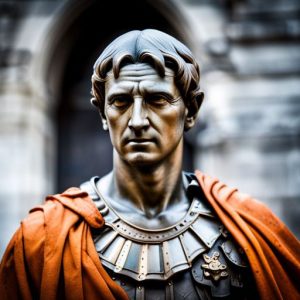
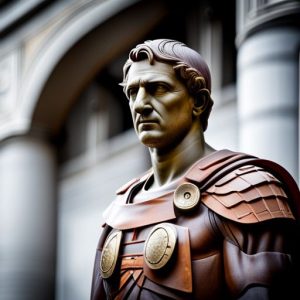
Get ready to witness the rise and fall of one of the most controversial figures in Roman history – Gaius Caesar Germanicus, also known as Caligula. Born in 12 AD as the third son of Germanicus, a beloved Roman general, and the granddaughter of Augustus, the first Roman emperor, Caligula was destined for greatness. With his charming looks, charisma, and wit, he was adored by the Roman people. However, his short-lived reign of only four years, from 37 AD to 41 AD, was nothing short of a rollercoaster ride filled with cruelty, extravagance, and madness.
Caligula’s ascension to the throne was relatively calm. Initially, he was a popular emperor who abolished unpopular taxes, restored democratic freedoms, and initiated massive building projects. However, it wasn’t long before things started spiraling out of control. Caligula’s behavior became increasingly erratic and bizarre, including donning women’s clothing and appointing his favorite horse as a consul.
The emperor’s cruelty was most evident in his treatment of the Roman Senate. He had many senators executed without any reason and publicly humiliated them. Caligula’s incestuous relationships with his sisters and rumored acts of extreme sexual depravity only added to his infamy. His reckless spending and taxation policies also put a tremendous strain on the Roman economy, leaving it in shambles.
But even with all his power, Caligula’s behavior eventually became too much for the people and the Senate to bear. In 41 AD, he met his demise at the hands of members of his own Praetorian Guard. Although his reign was short, Caligula’s legacy continues to fascinate historians and the public alike. He is remembered as one of Rome’s most notorious and eccentric emperors, whose reign serves as a cautionary tale about the dangers of absolute power.
The Art of Aging: Unveiling the Secrets of Okinawa Awamori
Okinawa awamori, which is an esteemed traditional distilled alcoholic beverage, holds a special place in the cultural heritage of Okinawa, Japan. It is deeply intertwined with the customs, traditions, and way of life on the island, with its origins dating back centuries. This exceptional libation is meticulously crafted using long-grain indica rice, undergoing a careful fermentation process with black koji mold and water. However, what truly sets this drink apart is its unique aging process; it is delicately entombed in traditional clay pots called kame and left to mature underground.
This underground seclusion allows the awamori to develop and unveil its complex flavors over time. The end result is an exquisite elixir that is both smooth and aromatic, boasting a distinctive taste profile with subtle undertones of tropical fruits, earthiness, and a gentle sweetness. The craftsmanship and quality of Okinawa awamori are highly esteemed, with many distilleries adhering to time-honored production methods passed down through generations. The production of awamori is not merely a skill; it is an artistic endeavor where master distillers devote their lives to perfecting this craft. Enthusiasts typically enjoy the spirit neat or over ice, relishing its intricate flavors sip by sip. Moreover, awamori imparts its distinct touch to various cocktails and culinary recipes, adding a unique flavor dimension to Okinawan cuisine.
Beyond its delightful taste, awamori carries significant cultural significance within Okinawan society. It takes center stage in traditional ceremonies, festivals, and celebrations, symbolizing unity and harmony while preserving local traditions. The spirit has also gained international recognition, attracting a growing interest among spirits connoisseurs worldwide who appreciate its exceptional qualities and cultural heritage. As a result, the production and consumption of Okinawa awamori continue to thrive, bolstering the island’s economy and sharing a valuable slice of Okinawan culture with the rest of the world.
Gabriel’s Grace: Illuminating the Path of Divine Communication
The celestial being known as Archangel Gabriel holds immense importance in the realm of heaven. Serving as the divine messenger, Gabriel specializes in conveying crucial announcements and enlightening revelations, acting as a bridge between the mortal world and the heavenly abode. Throughout various religious traditions, Gabriel has garnered great reverence as a respected figure, embodying the essence of divine guidance and spiritual enlightenment. Whether it involves delivering prophecies, imparting wisdom, or transmitting divine instructions, Gabriel’s role as the messenger angel assumes paramount significance in bridging the gap between humanity and the ethereal domain. With a gentle yet commanding demeanor, Gabriel brings forth messages that possess the potential to shape destinies, provide clarity, and initiate transformative change.
The name Gabriel holds profound meaning, signifying “God is my strength.” This further solidifies the belief that Gabriel serves as a source of divine power and protection, leading individuals towards their true purpose and nurturing their spiritual development. As the angel of communication, Gabriel’s celestial presence often accompanies moments of great importance, such as the annunciation to the Virgin Mary, wherein he revealed the impending birth of Jesus Christ. This particular event cemented Gabriel’s reputation as a dispenser of profound revelations and positioned him as a central figure in the Christian faith.
Extending beyond the boundaries of Christianity, Gabriel’s presence can also be found in other religious texts, such as the Quran, where he assumes a vital role in delivering divine messages to the Prophet Muhammad. Gabriel’s multifaceted nature goes beyond that of a mere messenger. Depicted frequently as a compassionate and nurturing figure, Gabriel offers solace and support to those in need. His angelic presence acts as a beacon of hope, reminding humanity of the infinite love and guidance bestowed upon them by the divine realm. In times of uncertainty and confusion, invoking the name of Gabriel can bring reassurance, clarity, and a sense of purpose. Whether individuals seek guidance, strive to deepen their spiritual connection, or simply yearn for divine intervention, Archangel Gabriel stands ready to assist, delivering messages of truth and enlightenment with unwavering grace and compassion.
Journey into Cinematic Enchantment: Exploring the Wonders of Weta Cave and Workshop
Prepare to be enthralled as I take you on an extraordinary expedition through the renowned marvels of the Weta Cave and Weta Workshop, nestled in the idyllic city of Wellington, New Zealand. These exceptional sites have left an indelible mark on the domain of film and special effects, captivating audiences with their monumental contributions to the artistry of cinema.
Immerse yourself in the enchanting realm of the Weta Cave, which acts as a gateway to the mystical world of the esteemed Weta Workshop. This distinguished company has lent its artistic prowess to blockbuster films such as the legendary “The Lord of the Rings” trilogy, the visually stunning “Avatar,” and the gripping tale of “King Kong.” As you step inside, get ready to be captivated by a plethora of mesmerizing exhibits that meticulously showcase the craftsmanship and painstaking attention to detail behind the creation of intricate props, costumes, and fantastical creatures that grace the silver screen.
Now, brace yourself as the Weta Cave beautifully breathes life into menacing Orcs roaming Middle-earth and the awe-inspiring Na’vi inhabitants of Pandora, enveloping visitors in the sheer enchantment of filmmaking. Traverse through the bustling haven of creativity that is the Workshop itself and feast your eyes on the process that transforms imagination into tangible reality.
Within the Workshop, skilled artisans and technicians pour their heart and soul into translating the visions of filmmakers into vivid realities. This inexhaustible haven of imagination blurs the boundaries between reality and fantasy, granting resolute freedom to the creative spirit. With guided tours, visitors are generously invited into this realm of cinematic marvels, offering an up-close and personal encounter with the intricate processes that underpin the creation of awe-inspiring movie magic.
From the sculpting of exquisite models to the artistry of digital design and the mesmerizing mastery of animatronics, the Workshop provides an unparalleled insight into the captivating world of special effects. While treading the paths of creative ingenuity, visitors find themselves enveloped in a treasure trove of memorabilia, including iconic props, awe-inspiring costumes, and thought-provoking concept art from some of the most cherished films in the annals of cinematic history. It is indeed a sanctuary for film enthusiasts and a profound testament to the limitless power of boundless imagination.
However, the allure of the Weta Cave and Weta Workshop extends beyond their exceptional offerings. These extraordinary establishments have solidified Wellington’s status as a prestigious hub for film production. Their influence not only graces the silver screen but also ignites the imaginations of countless aspiring artists and filmmakers worldwide. Their enduring legacy serves as a testament to what boundless creativity and unwavering passion can accomplish when they harmoniously converge.
I implore you to embark on this awe-inspiring cinematic pilgrimage to the Weta Cave and Weta Workshop, allowing yourself to be swept away by the wondrous feats of craftsmanship and innovation that undeniably reshape the world of film and special effects. Embrace the inspiration that permeates these revered halls, and witness your own imagination flourish in uncharted territories. For within these realms, the magic of storytelling finds its truest expression.



